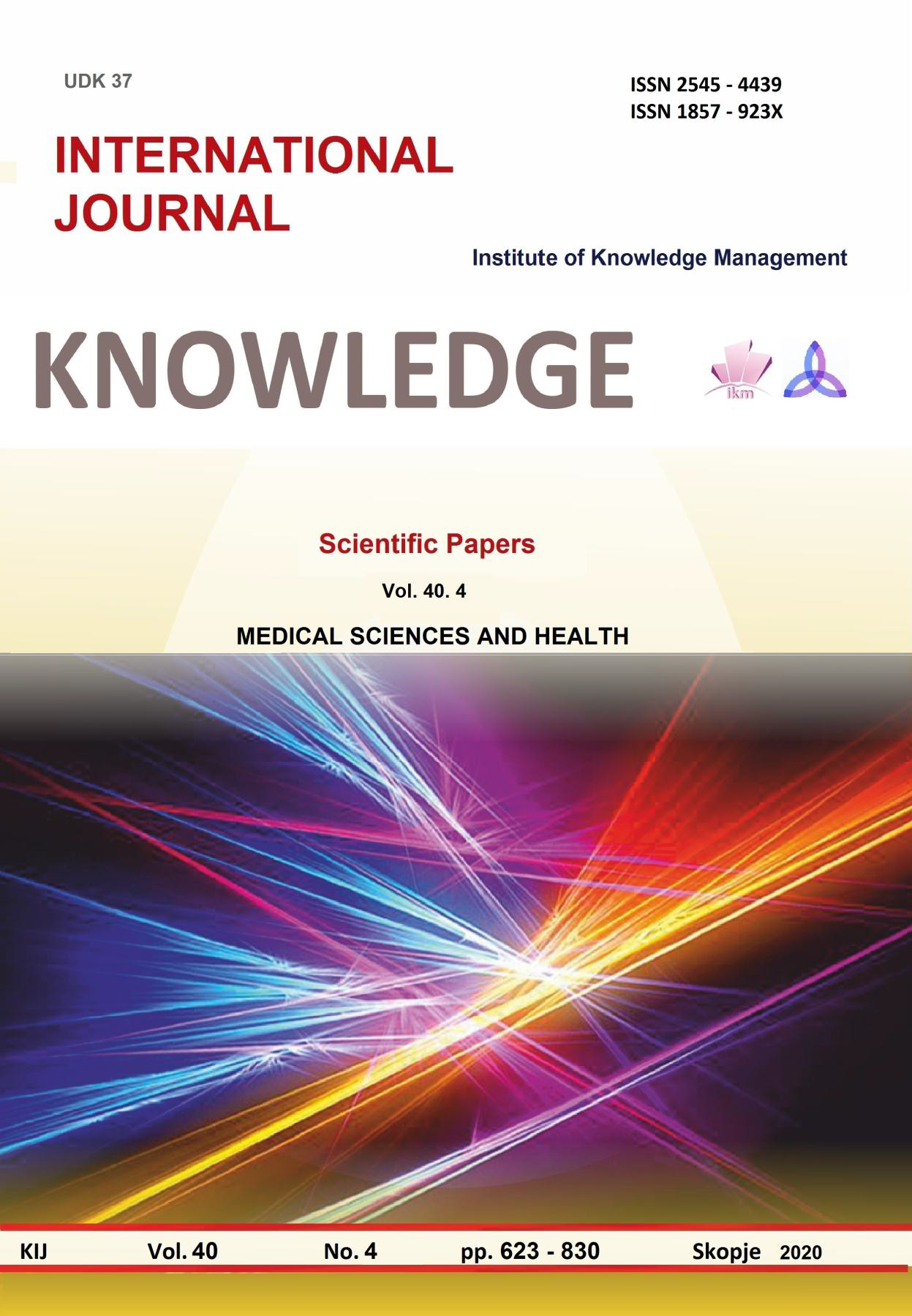EFFECT OF OLIGOSACCHARIDES ON SALIVARY ?-AMYLASE IN VITRO
EFFECT OF OLIGOSACCHARIDES ON SALIVARY ?-AMYLASE IN VITRO
Author(s): Ivica Dimov, Anelia Bivolarska, Ilia IlievSubject(s): Social Sciences
Published by: Scientific Institute of Management and Knowledge
Keywords: oligosaccharides; α-amylase; prebiotics; lactulose; FOS; inulin.
Summary/Abstract: Amylases are a part of the group of glycosyl hydrolases enzymes, that catalyze the breakdown of complex carbohydrates. The three main classes are α-, β-and ɣ-amylases. The main function of all amylases is to degrade starch, glycogen and other sugars. All α-amylases are metalloenzymes requiring Ca2+activity. In animals and humans, α-amylases occur in the pancreas, saliva, liver, serum, urine,etc.Salivary and pancreatic amylases are the main ones. They have 97% protein chain homology with each other. The secreted salivaryα-amylase initiates the carbohydrates digestion in the mouth.The concept of prebiotics was introduced in 1995 by Gibson and Roberfroid, as a non-digestible food ingredient that beneficially affects the host by selectively stimulating the growth and/or activity of one or a limited number of bacteria in the colon, and thus improves the host’s health. Later it became clear,that prebiotics have beneficial effects beyond the gastrointestinal tract. The purpose of the present experiment is toinvestigate the effect of oligosaccharides on the enzymatic activity of salivary α-amylase, since enzyme inhibitors are used as second line drugs in the therapy of type 2 diabetes. For this purpose, the α-amylase activity was determined by the Bernfeled method (1955) with some modifications. The reaction time was 10 minutes. Ten measurements for each group have been made. Groups were separareted as it follows: control, 1% lactulose, 2% lactulose, 1% fructooligosaccharide (FOS), 2% FOS, 1% inulin and 2% inulin. Statistical analyses were performed using GraphPad Prism version 7.00 for Windows (GraphPad Software, La Jolla California USA),descriptive statistical tests including mean, standard deviation were performed. The groups were compared using Student’s ttest. Differences with p <0.05 were considered statistically significant.Statistically significant decrease in the α-amylase activity was found when the control group (at 0 minute) was compared with FOS 1%, FOS 2%, 1% inulin and 2% inulin groups (p<0.05). Statistically decreased activity was registered in the presence of all oligosaccharides (p<0.05) on the 10th minute. At the results reported on the 10th minute, statistically decreased activity was found only between FOS 1% and FOS 2% (p=0.001). Between other groups were found no statistically significant differences (p˃0.05). Lowering of the postprandial glucose level was observed in an inhibition of pancreatic α-amylase. Increased levels of salivary α-amylase are found in patients with diabetes. Our results indicate that the salivary α-amylase activity decreases significantly in the presence of oligosaccharides after 10 minutes, which could be a prerequisite for a potential inhibitory effect and lowering of glucose concentration. From the present experiment we can’t conclude the mechanism of inhibition, but it is known that lowering the pH levels in the oral cavity leads to a decrease in the activity of salivary α-amylase. Prebiotics can optimize the oral microflora and, hence, lower the local pH in the oral cavity, reducing the activity of α-amylase. This could give us a possible explanation for the effect of oligosaccharides on salivary α-amylase.
Journal: Knowledge - International Journal
- Issue Year: 40/2020
- Issue No: 4
- Page Range: 741 - 745
- Page Count: 5
- Language: English

